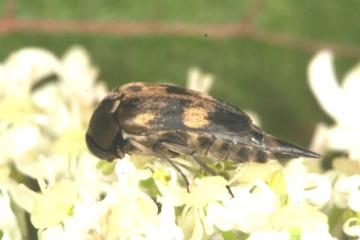Species Account for Variimorda villosa
PLEASE NOTE, many records in this group are not yet available
Variimorda villosa (Schrank, 1781)
Coleoptera: Mordellidae

Reproduction for study and non-profit use permitted, all other rights reserved.
Taxonomic group: beetles (Coleoptera) - Available county data
View time series maps for Variimorda villosa
member log-on for taxon report
Status: NS
Essex RDB: Listed
Images
upload a new image
Essex Red Data List comment
West Thurrock PFA lagoons 2000.
Species text
Variimorda villosa is widespread and local in the southern half of England, and also recorded in South Wales. It is very rare in Essex, but has also been found across the river in north Kent at Littlebrook Lakes where there is open unmanaged herbaceous vegetation with some scrub development along the northern edge. The larvae develop in either dead wood or plant stems, probably the latter and adults are usually found on flowers, particularly umbellifers. Management and conservation are uncertain, though trees, and both fallen and standing dead timber, especially with the bark attached, should be retained. The removal of dead timber from ancient trees should be avoided. Gaps in the age structure of the tree population should be identified and the continuity of the appropriate dead wood habitat ensured by regeneration, suitable planting and possibly with pollarding. The presence of nectar sources such as umbellifers and composite herbs may also be particularly important for this species (Hyman & Parsons, 1992). References
Habitats
Recorded management for locations with Variimorda villosa
Recorded substrate and hydrology for locations with Variimorda villosa
Why not join the Club, register and add a new species page
Interpretation of distribution maps



















